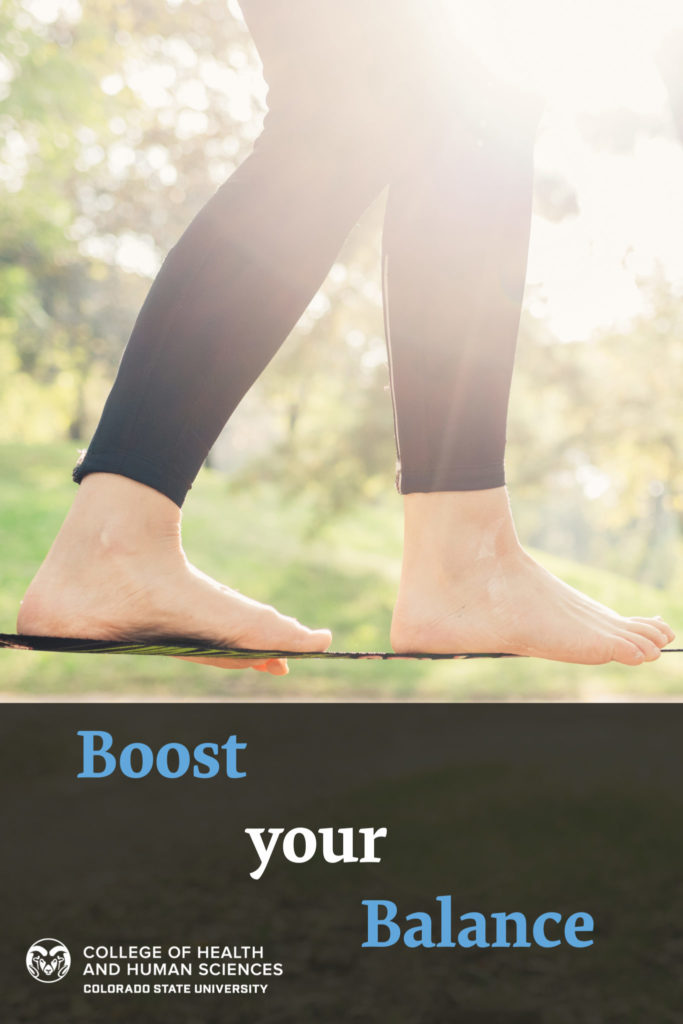
The ability to balance is something we tend to take for granted until we start to notice it decreasing. That is why it is never too early to start incorporating balance into your exercise routine. Improving and working on your balance can help in areas like increasing your coordination, stability, flexibility, and confidence. Making balance part of your regular routine can also positively impact other physical aspects like strength. Here are ways to incorporate balance exercises into your routine.
It gets better with time
Balance exercises can (and should) be a little challenging. With consistent effort, the movements and stances should get easier. They are also able to be modified to increase or decrease the difficulty. As you get more comfortable, aim to do exercises longer or with additional challenges to the surface of support.
Where does balance come from
Balance exercises aim to work your core, lower back, and leg muscles. Strength training exercises for the lower back and legs can help to improve balance. Learning to engage the core in any exercise can help to protect the low back and help to maintain stability.
Exercises to try
When exercising, be sure to be in comfortable clothing and supportive shoes, and be sure to be in a safe space to avoid falls.
Tightropes walk
Imagine (or use a) line. You can have your hands out wide to the side or on your hips. Walk along the line with both feet and avoid stepping away from the line. Walk for about 10-15 steps forward. Then try walking backwards.
Single leg balance challenges
Stand on one foot and straighten the stable leg. With the non-stable leg, you can slowly raise the knee to hip height and back to the ground, repeating 10-15 times before switching sides. You can alternate the movements by raising legs laterally out to the side, across the body, or extending the leg and raising the heel out behind you. Play around with different lifts and feel free to use toe taps or pauses wherever you need.
Single leg step-ups (or stairclimbing)
Use a step, preferably one of a low height with supports nearby. Start with the right leg and step up, planting the full foot on the step and lifting up to bring the left leg onto the step. Step down with the right leg first, then left, to return to the start position. Repeat this motion 10-15 times per each leg, alternating which leg is used as the lead leg.
Side steps (shuffle walks)
You can start in a full stand with feet together or, for an increase in intensity, start in a squat position. Start with the right leg and step out slowly into a wide stance, and then bring the left leg to follow. You can stand up in between or stay in the low stance. Complete the shuffle walk with 10-15 repetitions to each side.
Yoga/Tai Chi
It’s great to incorporate other forms of exercise that will address balance, methods that use a base of support and foot positions, but it is also beneficial to address strength and flexibility through methods like Yoga and Tai Chi.
Balance is easy to overlook, or to think it will only start to matter once we are older. However, we all tend to notice when our balance isn’t as sharp as it once was, after it has already declined. Balance exercises are important to start early to help maintain balance and decrease the risk of falls, as well as the injuries associated with them. As with life in general, life feels better with balance.
Kimberly Burke is the director of the Adult Fitness Program at Colorado State University, an outreach program through the Department of Health and Exercise Science. Adult Fitness offers exercise opportunities for employees of CSU as well as community members, while providing hands-on learning experiences for health promotion students. To learn more see http://hes.chhs.colostate.edu/outreach/adultfitness/